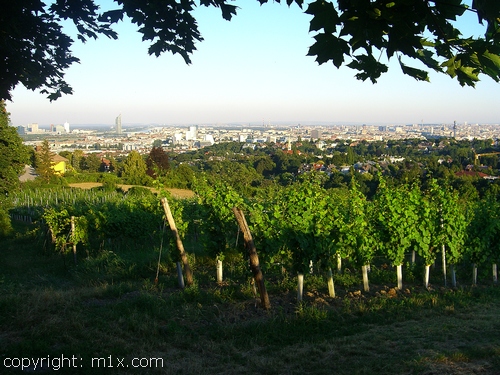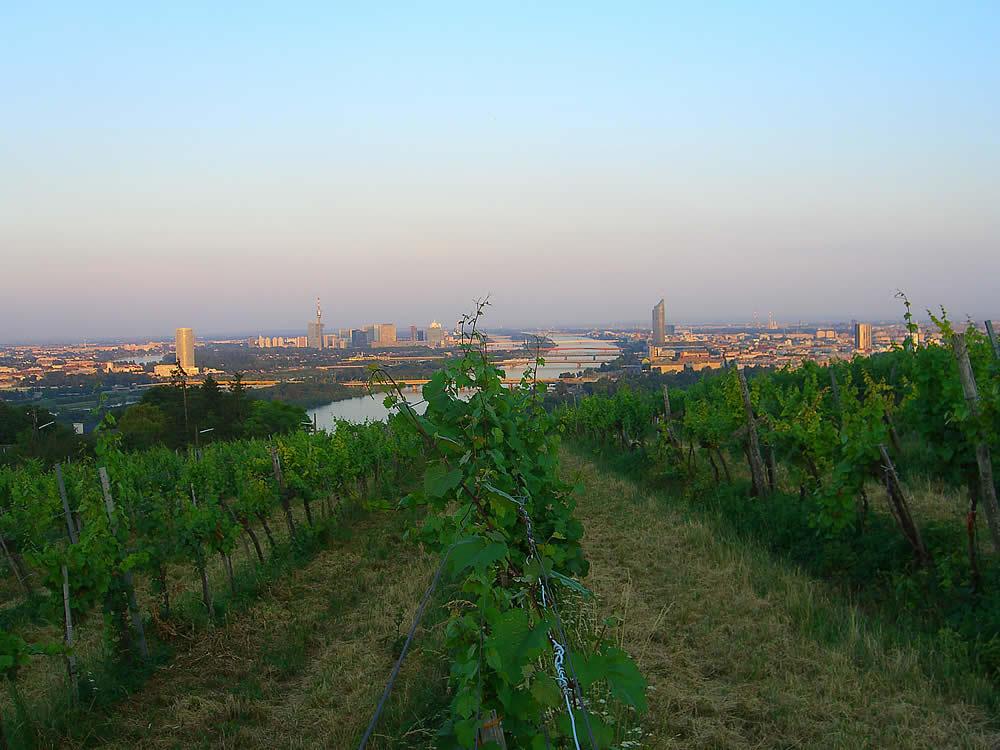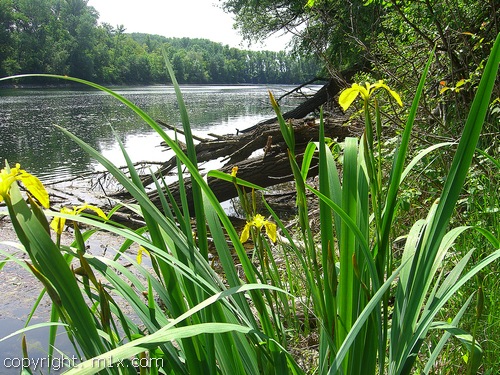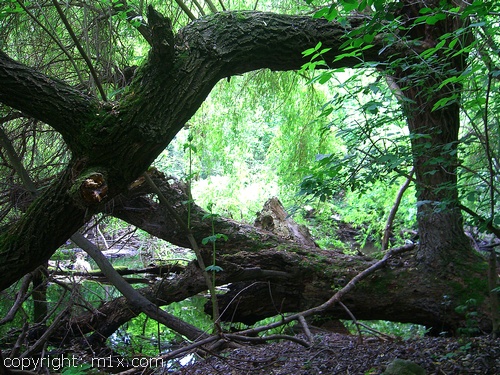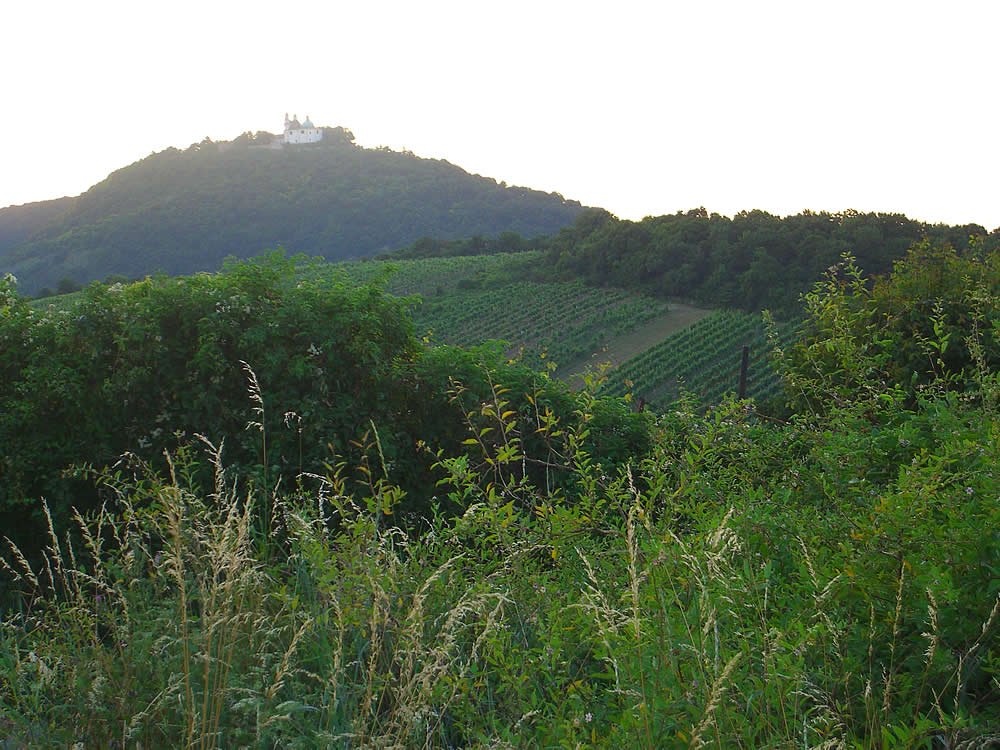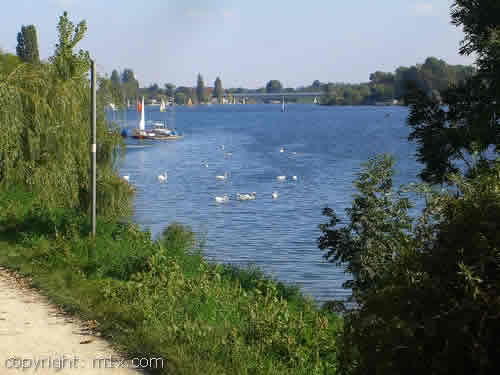VIENNA WOODS AND BLUE DANUBE
Vienna is full of surprises. It’s not just the famous landmarks along the Ringstraße or Schönbrunn that thrill visitors… on the outskirts of the city there are also many distinctly Viennese attractions awaiting a rewarding discovery, es pecially the Vienna woods and the Danube.
Explore the rolling hills of the Vienna Woods and enjoy the view over Vienna and the Danube.
Take a stroll in the Prater, a former imperial hunting and riding area. Give yourself the pleasures of bathing in more than 40 miles of beach on the Danube Island or along the Old Danube. By bike or by roller skates. Enjoy the wide area in the wilderness of the Lobau, the primeval floodplain and jungle next to the Danube. Fishes, frogs, otters, beaver & Co, oaks, poplars and lianas are waiting for you! Enjoy the frog concert!
VIENNA WOODS
The Vienna Woods are the foothills of the eastern Alps. The soft rocks of flysch (sandstone, shale, marl) give the northern Vienna Woods a graceful, gentle skyline.
The Vienna Woods sunny slopes are ideal for growing grapes.
Especially the forest edges and the dry, treeless hills are dominated by the Pannonian flora. Oak trees, dry grasses and rare wild flowers dominate the flora. The interior of the forest is dominated by the beech / oak forest in the high operation, some places were also found in hornbeam coppice operation.
TRIPS:
1. Leopoldsberg and Kahlenberg
2. Nussberg (Walnut hill) and “Eiserne Hand” (Iron Hand)
3. Cobenzl and Hermannskogel
4. Cobenzl, Am Himmel ( on the sky) and Sisi Chapel
5. Long tour on the western edge of Vienna
6. Bisamberg
1. Leopoldsberg and Kahlenberg
Take the S-Bahn to Kahlenberger Dörfl (S-Bahn heading towards Klosterneuburg starts from St. Josefs Bahnhof, you can switch to it at U4/U6-Station Spittelauer Lände).
Or take a bus from the U4 Heiligenstadt to Klosterneuburg. Leave the bus at the station Kahlenberger Dörfl and look for the path of the „nose“ on the Leopoldsberg. . Here is a church and a memorial about the end of the occupation of Vienna by the Turcs under kara Mustafa at 1683.
From Leopoldsberg you can walk to the Kahlenberg. There, the 38A bus goes to Grinzing (tram line 38) and U4 to Heiligenstadt.
2. Nussberg (Walnut hill) and “Eiserne Hand” (Iron Hand)
A trip for romantics, nature lovers and admirers of wine culture. Line D to the final stop Nussdorf, then follow the Bockkellergasse and take the Nußberggasse to the right hand. After 500 m, you come to Eichelhofweg and go up the hill.
This small hike on the Nussberg will intensify your relationship to Vienna. The scenery is lovely, the vegetation reflects the pannonian influence. You walk through the vineyards and overlook the Danube valley in the north and the whole of Vienna in the south, great! Arriving at the summit, you will find some Heurigen to have a rest and enjoy the ambience. From the Eiserne Hand, you can either go down to Kahlenberger Dörfl, or you go to Grinzing and find the line 38.
3. Cobenzl and Hermannskogel
With the tram line 38 to the station Grinzing and then bus 38A to Kahlenberg, you leave at Cobenzl on the “Höhenstrasse”. The bus 38A starts at the U4 Heiligenstadt. The Höhenstrasse was built in the 1930s as an employment measure and extends from the Leopoldsberg to the Wiental in the Southwest.
At Cobenzl, you follow the signs to Hermannskogel. From there it goes down to Neustift, passing the Häuserl on Stoan, a restaurant. In Neustift, several Heurigen wait for thirsty throats. There the 35A bus leads back to Billrothstraße and there, you can switch to the tram line 38.
4. Cobenzl, Am Himmel and Sisi Chapel
This trip is mostly convenient, without great differences in height. From Cobenzl, you walk across meadows to Sisis Chapel and then to Am Himmel with his Sigmund Freud memorial stone.
5. Long tour on the western edge of Vienna:
Directions as in Section 2 From Cobenzl, follow the signs Hütteldorf. The route takes a day efficient walk.
6. Bisamberg
A wonderful excursion into the world of the pannonian Bisamberg. You discover a new flora. Everything is sweeter, softer and warmer. The soil is from loess, a particle size between clay and sand, which combines the positive properties of the sand (no waterlogging) and the sound (good moisture retention).
We take the tram line 31 from the U4/U2 Schottenring (Alternative: Use Line 30 from S-Bahnhof Floridsdorf U6) and go after a long journey in the small, perfect world of tribal village. From there, run the cellar lanes and thickets and along liana root network of acacia (real name: Robinie).
The trail leads to the Bisamberg between vineyards, almond trees, peach trees to the forest. It has a magnificent view of the wine district, and of course at Vienna and the Vienna Basin. On the way back, we make a halt at the Heurigen. If you are in search of Vienna natives, here, you have your best chance!
GREEN PRATER
The Wiener Prater is the peri-urban, forested floodplain on the right bank of the Danube. Formerly an imperial hunting and riding area for the imperial family (see also Augarten). 1766, Joseph II granted the public access and allowed the construction of restaurants. This also laid the foundation for the entertainment district Wurstel Prater . The Prater became the amusement park, but also a center of prostitution. After the regulation of the Danube in 1868, the side arms became separated from the river (Heustadelwasser).
1873 was held in the Prater Vienna World Exhibition. The area was dominated by the large rotunda, an exhibition hall. It was destroyed by fire 1937. A part of this area today are the halls of the Messe Wien.
Today, the prater is a large recreation area for jogging, cycling, horse riding and just walking through the woods. You find here along the Prater Hauptallee the famous Liliputbahn, a train for children, the Lusthaus, a restaurant in a monarchy-style, the Meierei and the Wurstelprater. You can reach the Prater by U2 or U1.
BLUE DANUBE
Vienna and the Danube. The Danube is marked in history as a border and transportation route, as a myth, as a habitat and food source, and now also as a recreation area.
Where the Danube breaks through the strait between Bisamberg and Leopoldsberg, begins the east and the Pannonian area, with its milder and drier climate and vegetation, which stretches out to the Black Sea. The Danube River was the lifeline of the monarchy, which extended to southern Bukovina near the estuary at the Black Sea.
The Danube has been tamed more than a hundred years ago. Before the first regulation, the side arms reached up to the city center. There have been caught the Hausen, a fish up to 8 meters long. Today the river is straightened and surrounded by flood protection. Not to the detriment of the quality of life: The 20 km long Danube island separates the Danube since the 1980s by the New Danube. A groundwater basin with relatively clean bathing water, which is flooded only during high water by opening the floodgates.
You can reach the Danube island easily by U1, U2 and U6. On the „island“ you can indulge in a very relaxed attitude to life. Whether as cyclists, roller skaters, surfers, water skiers, bathers, or as a Nudist (in the southeast area east of Steinspornbrücke): Here you can feel a distance to civilization. There is enough room for everyone. And you will always find restaurants or kiosks with refreshments.
From the Danube Island, it goes into the Lobau or generally to the Danube cycle path to Bratislava. The Lobau has to offer a wild nature, but also historical sites. Here stood Napoleons headquarters, three battles took place in the region. Finally, in Paris behind the Hôtel de Ville you can find Rue Lobau and also at the Paris Arc de Triomphe, the name “Lobau” is carved in stone.
JUNGLE LOBAU
The Lobau is a wild floodplain along the Danube and a national park. It is a popular recreational area. Enjoy the frog concert!
It can be found habitats, but also fishing waters, backwaters of the Danube, reeds landscapes, hot countries (sandy dry areas) with appropriate flora such as sea buckthorn, pine. In the Spring, the snowdrops, in April of wild garlic. Are always on the edge agricultural land. The Lobau was because of the wealth of wildlife once an imperial hunting ground. Today, the Lobau is protected and is part of the National Park Danube Floodplains. A number of endangered animal and plant species found a refuge.

